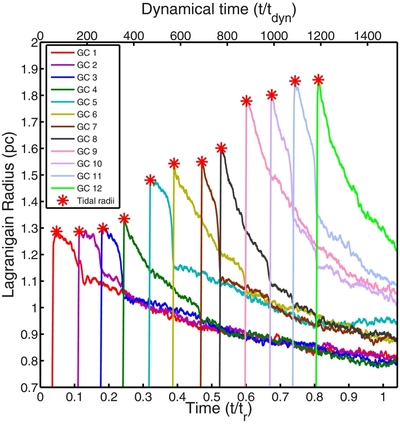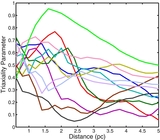Image Details

Caption: Figure 2.
Evolution of the Lagrangian radii for the central hundred stars of each of the clusters. The initial Lagrange radius is 0.2 pc for each cluster. Once the cluster is disrupted (see the star symbols), the Lagrange radius transitions from being relative to the location of the central density of the cluster to effectively become the distance from the MBH, hence the rise from 0.2 pc (not shown) to the tidal radius central density of each cluster. As can be clearly seen, the stellar population of the earlier falling clusters is progressively more centrally concentrated than the populations of later falling clusters.
Copyright and Terms & Conditions
© 2014. The American Astronomical Society. All rights reserved.





